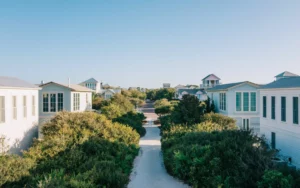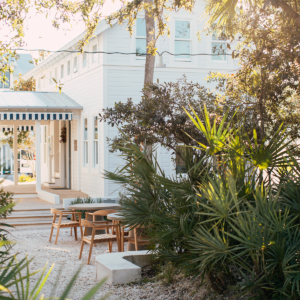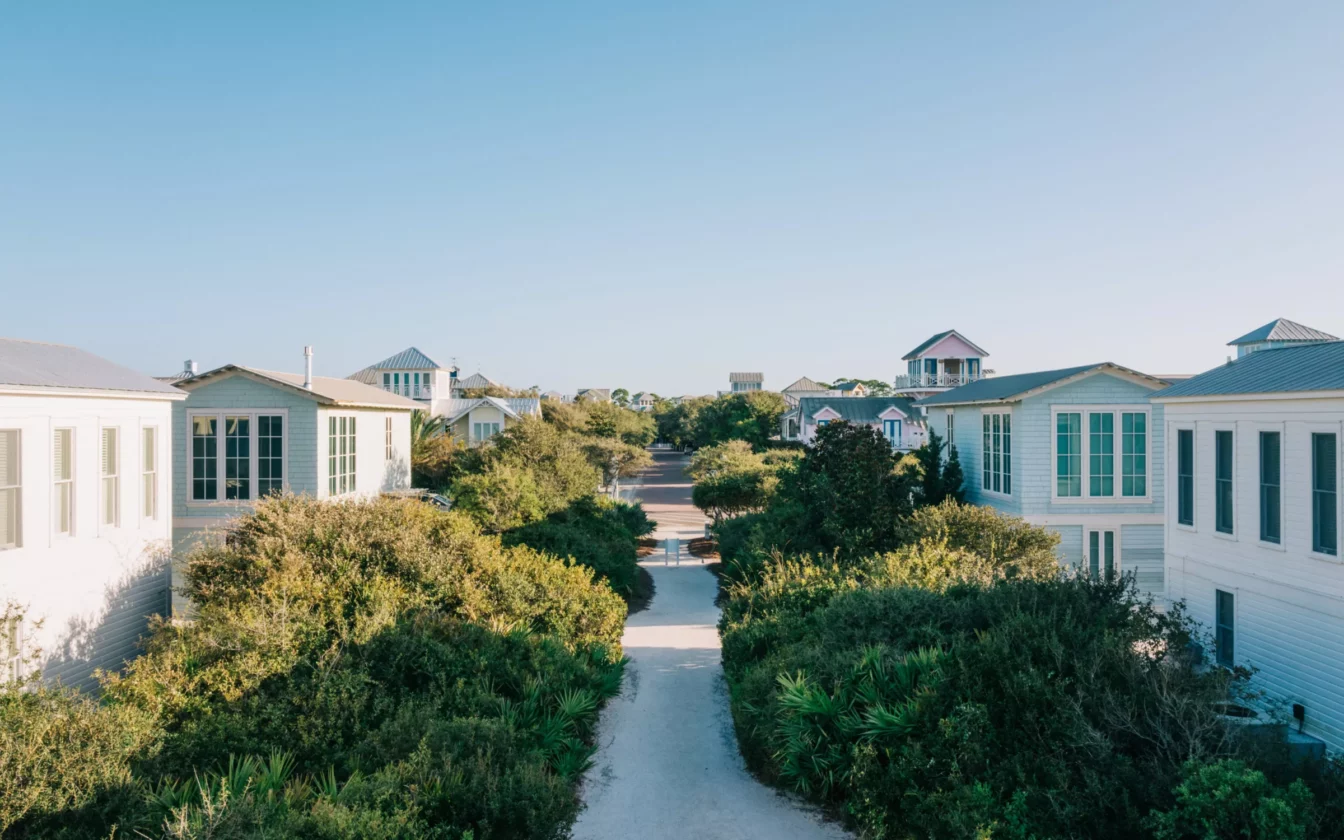Xeriscape in SEASIDE®
 As the populations of native insects, birds and other wildlife are suffering the consequences of overly-manicured lawns, many homeowners throughout the country are increasingly incorporating native plants and trees to provide food for local and migratory bees, butterflies and birds.
As the populations of native insects, birds and other wildlife are suffering the consequences of overly-manicured lawns, many homeowners throughout the country are increasingly incorporating native plants and trees to provide food for local and migratory bees, butterflies and birds.
A New York Times article noted that in 2020 there was a 50 percent increase in people creating wildlife gardens, and that localities and states are enacting pollinator-friendly laws.
When Seaside was conceived, the town’s landscape architect, Douglas Duany, insisted that the majority of existing vegetation be protected. The practice of xeriscaping (from the Greek words Xeros, meaning dry and scape, meaning view) uses native plants that require little maintenance due to their ability to adapt to their environment.
In the book, “Reflections on Seaside,” author Dhiru A. Thadani writes:
Vegetation in the private realm has been limited to native species, in most cases existing prior to development, and does not require fertilizers or watering to thrive. Going a step further, Seaside banned the use of turf grass on private residential properties. The accepted ground cover on residential lots is pine straw. Grass is only permitted in the civic realm: the Central Square; the Lyceum Green; Forest Street Park; the forecourt to the Seaside Chapel; and the croquet field in the northeastern recreational area.
The preservation of the existing native plants and xeriscaping aligned with Robert Davis’s frugal and debt-free development goals. This was a less expensive proposition and lots could be sold without having to be cleared. It also supported his romantic notion of vernacular-inspired rustic wood cottages sprinkled across a natural landscape of native plants.


 The unintended consequence of building on a tract of land that had been covered with native species is that the vegetation thrived over the past 40 years. These once stunted scrub oaks and other native species have flourished in areas where they are protected by buildings from the harsh Gulf breezes. The shield has permitted them to grow substantially tall, to the point of obscuring the architecture. In unprotected areas, the plants stayed low to the ground, receiving a haircut from the harsh winds.
The unintended consequence of building on a tract of land that had been covered with native species is that the vegetation thrived over the past 40 years. These once stunted scrub oaks and other native species have flourished in areas where they are protected by buildings from the harsh Gulf breezes. The shield has permitted them to grow substantially tall, to the point of obscuring the architecture. In unprotected areas, the plants stayed low to the ground, receiving a haircut from the harsh winds.
At first, many residents were unaccustomed to the natural, unmanicured look of xeriscape. However, once they accepted that they did not have to water the vegetation and appreciated the low maintenance, they were in full support of only planting native species. Over the





























































